Are you curious about the common types of trees in the forests and how they contribute to Vietnam’s beautiful landscapes? SIXT.VN is here to guide you through the diverse world of trees, providing insights and travel tips to enhance your Vietnamese adventure. Discover the unique tree species and plan your eco-friendly tour today.
1. What Are the Common Types of Trees Found in Western Forests?
The common types of trees found in Western Forests include Ponderosa Pine, Douglas-fir, Western Larch, Engelmann Spruce, and Whitebark Pine. These species are selected for their regional specifications and future resilience.
1.1. Ponderosa Pine
Ponderosa Pine is a wide-ranging conifer found throughout the West. Its drought tolerance and ability to survive low-intensity wildfires and regenerate naturally make it a good choice for forests that experience frequent disturbances.
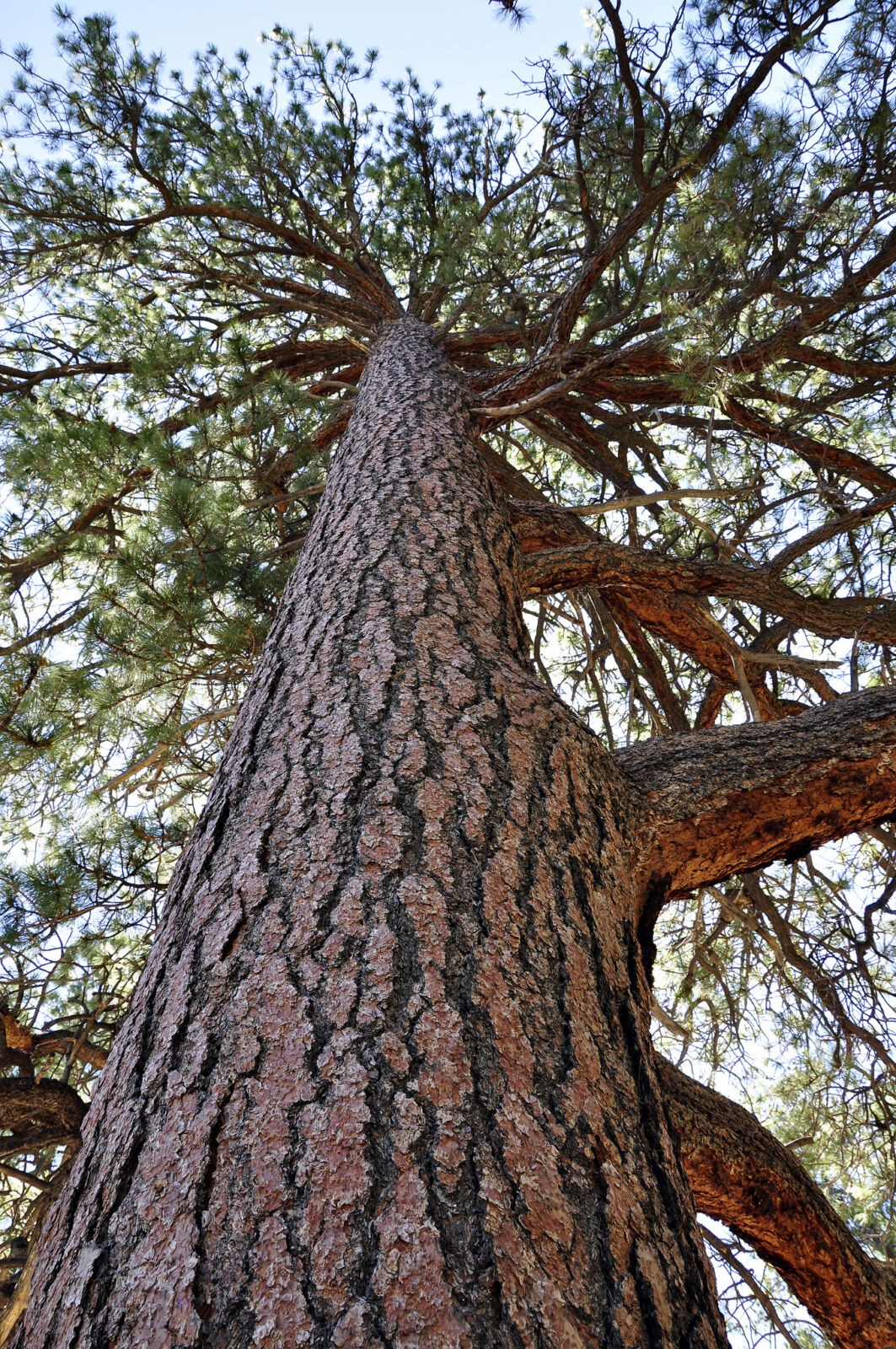 Ponderosa Pine Tree Coconino
Ponderosa Pine Tree Coconino
1.2. Douglas-Fir
Douglas-fir can grow in a variety of climates and soil types and develops a higher tolerance to fire as it ages and its bark thickens. Because of its soft needles and conical shape, the Douglas-fir is a popular Christmas tree. If you’re visiting Vietnam during the holiday season, consider booking a cozy hotel through SIXT.VN where you can enjoy the festive atmosphere.
1.3. Western Larch
Western Larch is often found with Douglas-fir but is also associated with many other conifers. This species grows quickly and lives for a long period of time, with reports of 900-year-old trees documented. Unlike most conifers, larches are unique in that they drop their needles in the winter.
 Ok Wen Mt Stewart USDA Dawn Fouts small
Ok Wen Mt Stewart USDA Dawn Fouts small
1.4. Engelmann Spruce
Widespread throughout the Rocky Mountains, Engelmann Spruce is a major component of high-elevation forests. The species is important for wildlife, providing cover from predators and a barrier from suboptimal weather – cool shade in the summer and a warm break in the winter. Consider booking a wildlife tour through SIXT.VN to explore Vietnam’s diverse ecosystems.
1.5. Whitebark Pine
Whitebark Pine plays an important role in wildlife conservation and water supply, but this pine is under threat from wildfire, mountain pine beetles, and white pine blister rust, all heightened by a changing climate. Nearly 90 percent of all whitebark pine forests occur on federal lands, with the majority on National Forests.
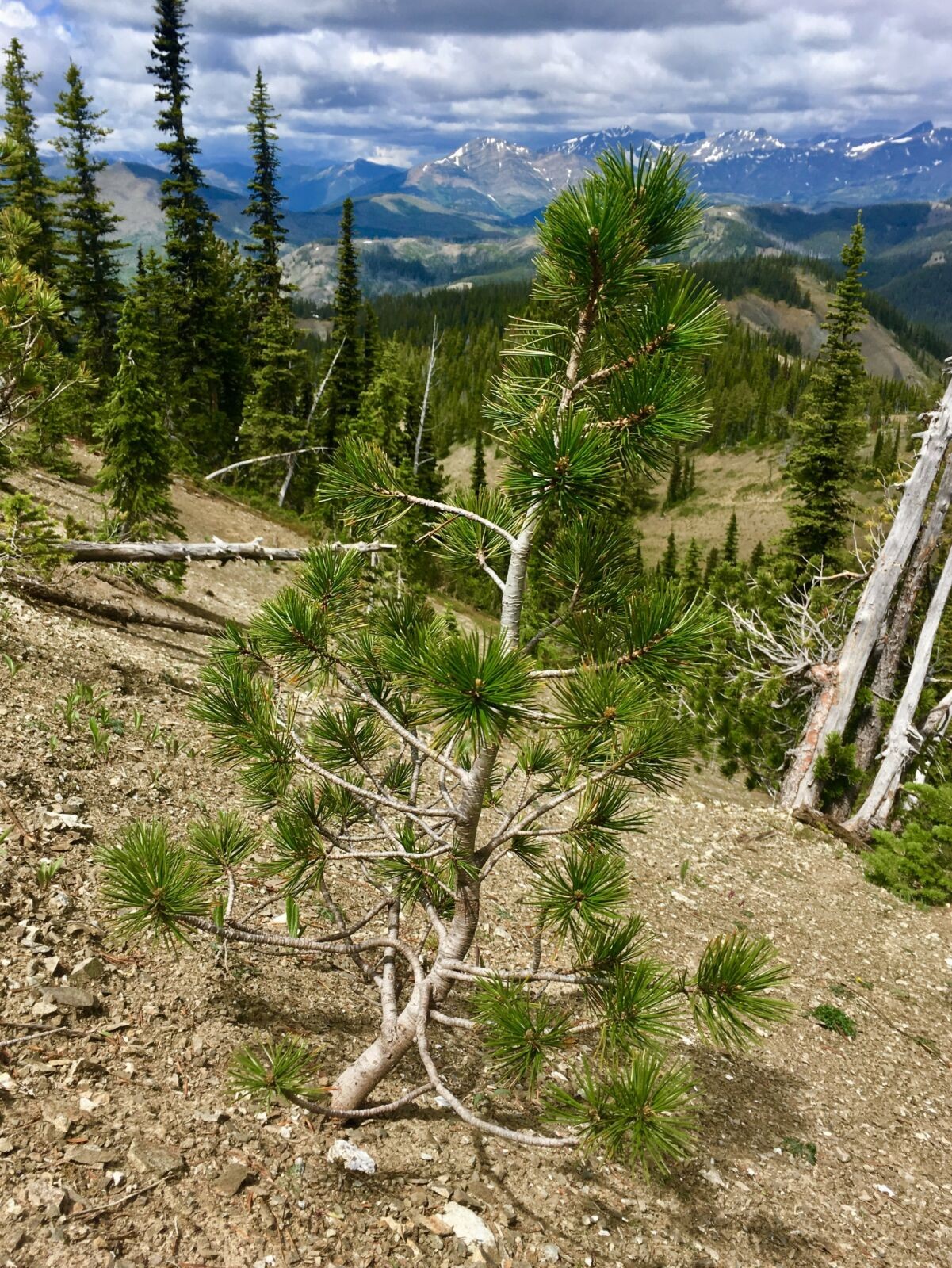 WBP on FH Flickr Photo by USFS Amber Drysdale
WBP on FH Flickr Photo by USFS Amber Drysdale
2. Which Tree Species Dominate Southeastern Forests?
Longleaf Pine and Shortleaf Pine are the tree species that dominate Southeastern Forests. These pines are essential to the regional ecosystem and have specific needs for survival and propagation.
2.1. Longleaf Pine
The longleaf pine ecosystem once covered vast stretches of the Southeast but today is found on only a small fraction of their historic ranges. Fire suppression has been a major factor in the pine’s decline, as frequent mild fire – both natural and human-caused – is essential in maintaining the longleaf ecosystem.
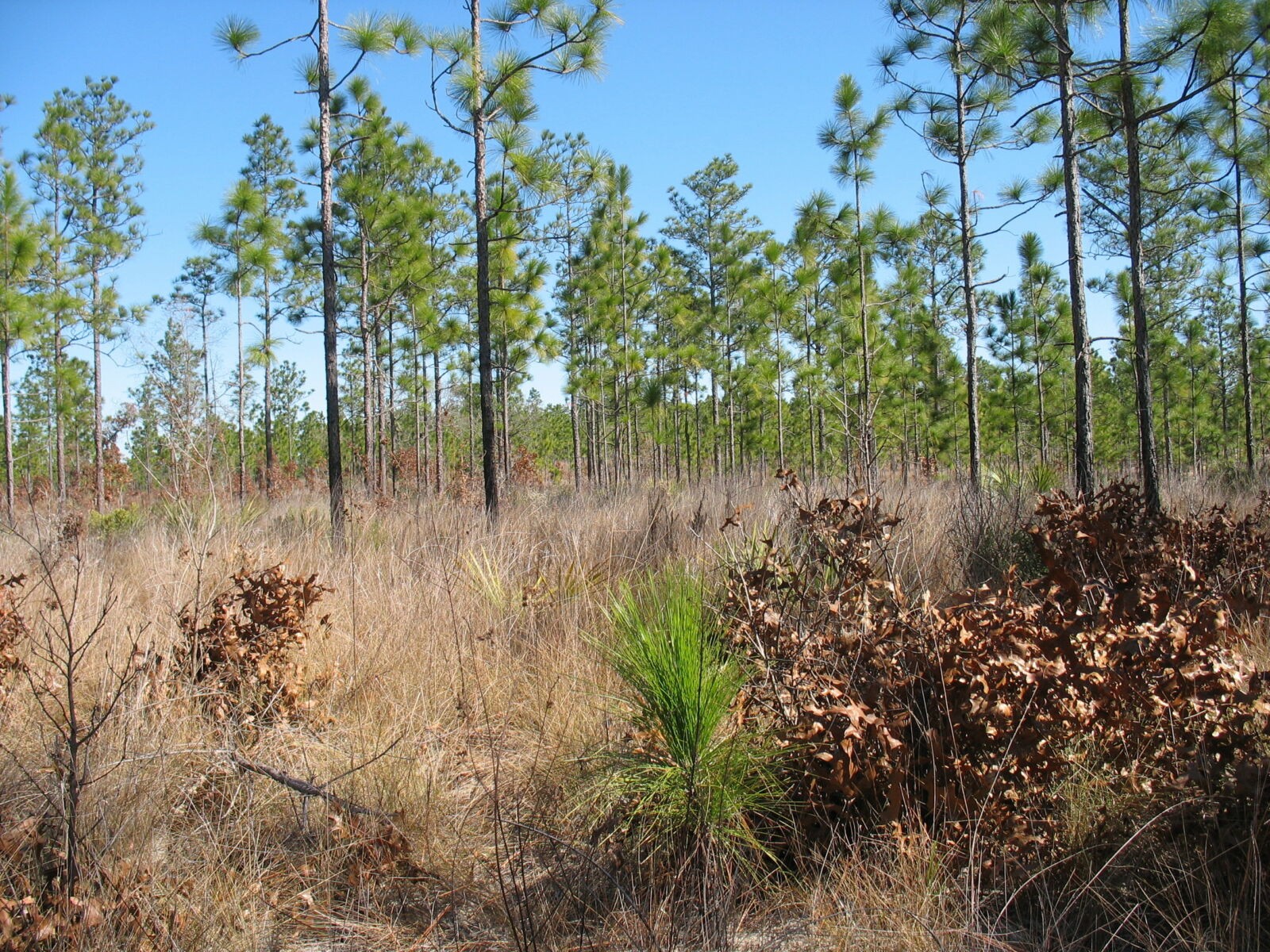 FL 2011 001
FL 2011 001
2.2. Shortleaf Pine
Shortleaf pine forests historically stretched from Oklahoma and eastern Texas to New Jersey in the North and Florida in the South. The once extensive shortleaf pine forests – important for wildlife habitat, local cultural ties, and water quality – have lost more than half of their former range in just the past few decades due to pine beetle outbreaks, land-use changes, and other causes. If you’re interested in the local culture, SIXT.VN can help you arrange visits to cultural sites.
3. What Tree Types Are Prevalent in Great Lakes Forests?
Jack Pine, Eastern White Pine, and Red Pine are prevalent tree types in Great Lakes Forests. These species are adapted to the region’s climate and play a vital role in the ecosystem.
3.1. Jack Pine
Planting jack pine trees helps Kirtland’s warblers, one of North America’s rarest songbirds and a habitat specialist that requires young jack pine stands for breeding and nesting. Jack pine has serotinous cones that need fire to release their seeds.
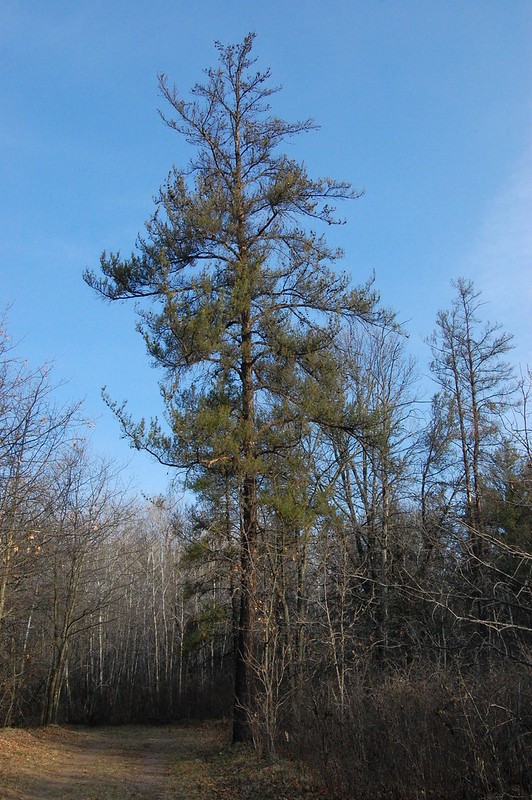 Jack pine Eli Sagor flickr
Jack pine Eli Sagor flickr
3.2. Eastern White Pine
Eastern white pine provides food and cover for a range of animals, from songbirds to black bears. With its soft, long needles, the white pine is another popular Christmas tree. Due to its soil chemistry, eastern white pine was widely used in mining reclamation in Appalachia. When visiting Vietnam, consider booking a tour to experience its natural beauty.
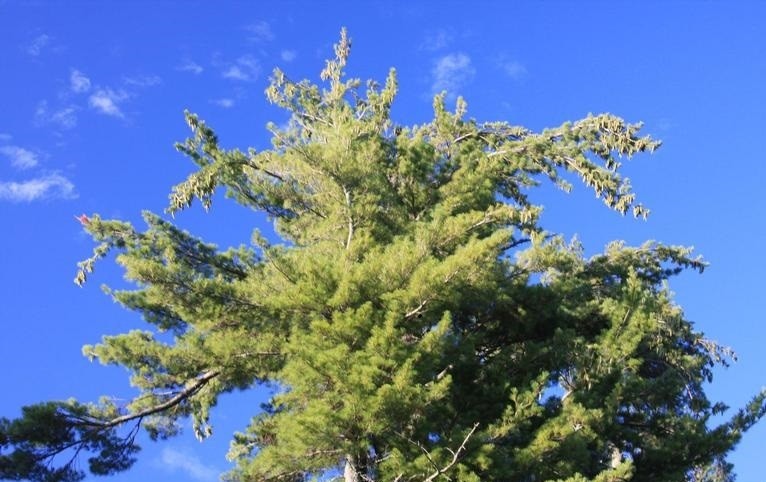 Eastern WhitePine StevenKatovich USDA Forest Service
Eastern WhitePine StevenKatovich USDA Forest Service
3.3. Red Pine
Red pine is a fire-adapted species that needs fire for its establishment and growth. Periodic fire historically maintained red pine stands throughout this region. This tree is long-lived, typically reaching between 200-400 years in age.
4. How Do Tree Species Contribute to Forest Ecosystems?
Tree species contribute significantly to forest ecosystems by providing wildlife habitats, maintaining water quality, preventing soil erosion, and supporting biodiversity. They also play a crucial role in carbon sequestration, helping to mitigate climate change.
4.1. Wildlife Habitat
Trees provide essential habitats for various wildlife species. For example, the Engelmann Spruce offers cover for animals from predators and harsh weather conditions. Similarly, Eastern White Pine provides food and shelter for songbirds and black bears. According to research from the U.S. Forest Service in 2018, diverse tree species support a wider range of wildlife, enhancing the overall biodiversity of the forest.
4.2. Water Quality
Forests play a crucial role in maintaining water quality. Tree roots help to filter pollutants and prevent soil erosion, ensuring that water sources remain clean and healthy. The presence of trees along riverbanks and watersheds is vital for maintaining stable ecosystems.
4.3. Soil Erosion Prevention
Tree roots bind the soil together, preventing erosion and landslides. This is particularly important in mountainous regions or areas with steep slopes. Forests act as a natural barrier, protecting the soil from the erosive forces of wind and water.
4.4. Biodiversity Support
Different tree species support different types of plants and animals, contributing to overall biodiversity. A diverse forest ecosystem is more resilient to environmental changes and can better withstand disturbances such as disease outbreaks or extreme weather events.
4.5. Carbon Sequestration
Trees absorb carbon dioxide from the atmosphere, helping to mitigate climate change. They store carbon in their trunks, branches, and roots, effectively reducing the amount of greenhouse gases in the atmosphere. Forests are considered vital carbon sinks, playing a significant role in global climate regulation.
5. What Role Do Native Trees Play in Reforestation Efforts?
Native trees play a crucial role in reforestation efforts by ensuring ecological appropriateness and long-term sustainability. They are adapted to local conditions and support native wildlife and ecosystems.
5.1. Ecological Appropriateness
Native trees are best suited to the local climate, soil conditions, and environmental factors. They have evolved over time to thrive in specific regions, making them more resilient and less susceptible to diseases or pests. Planting native trees ensures that reforestation efforts are ecologically sound and sustainable.
5.2. Support for Native Wildlife
Native trees provide food and shelter for native wildlife species. They are an integral part of the local ecosystem, supporting a complex web of interactions between plants, animals, and other organisms. Reforestation efforts that focus on native trees help to restore and maintain healthy wildlife populations.
5.3. Long-Term Sustainability
Native trees are more likely to survive and thrive in the long term because they are adapted to local conditions. They require less maintenance and are better able to withstand environmental stresses such as drought, fire, and disease. Planting native trees ensures that reforestation efforts will have lasting benefits for the environment.
5.4. Genetic Diversity
Using seeds extracted from trees near the project sites ensures genetic diversity, which is important for the long-term health and resilience of the forest. Genetic diversity allows trees to adapt to changing environmental conditions and resist disease outbreaks.
6. How Does Fire Affect Tree Species in Forests?
Fire can have both positive and negative effects on tree species in forests. Some trees, like Longleaf Pine and Red Pine, are fire-adapted and require periodic fires for regeneration and growth. However, wildfires can also be destructive, particularly for trees that are not adapted to fire.
6.1. Fire-Adapted Species
Fire-adapted tree species have evolved to withstand and even benefit from periodic fires. For example, Longleaf Pine requires frequent mild fires to maintain its ecosystem, while Red Pine needs fire for its establishment and growth. These trees have thick bark, high crowns, and other adaptations that protect them from fire damage.
6.2. Regeneration and Growth
Fire can help to clear underbrush and release nutrients into the soil, creating favorable conditions for tree regeneration. Some tree species, like Jack Pine, have serotinous cones that require fire to release their seeds. Fire can also reduce competition from other plants, allowing fire-adapted trees to thrive.
6.3. Wildfire Risks
While some trees benefit from fire, wildfires can be destructive, particularly for trees that are not adapted to fire. Wildfires can kill trees, damage habitats, and release large amounts of carbon dioxide into the atmosphere. Climate change is increasing the risk of wildfires in many regions, posing a threat to forest ecosystems.
6.4. Forest Management
Forest management practices, such as prescribed burning, can help to reduce the risk of wildfires and promote healthy forest ecosystems. Prescribed burning involves setting controlled fires under specific conditions to clear underbrush and reduce fuel loads. This can help to prevent larger, more destructive wildfires and create favorable conditions for fire-adapted tree species.
7. How Do Climate Change Impacts Affect Common Tree Species?
Climate change impacts, such as rising temperatures, altered precipitation patterns, and increased frequency of extreme weather events, can significantly affect common tree species. These changes can lead to reduced growth rates, increased susceptibility to pests and diseases, and shifts in species distribution.
7.1. Rising Temperatures
Rising temperatures can lead to heat stress and reduced growth rates for many tree species. Some trees may struggle to survive in warmer climates, particularly if they are not adapted to high temperatures. This can lead to shifts in species distribution, as trees migrate to cooler areas.
7.2. Altered Precipitation Patterns
Changes in precipitation patterns, such as prolonged droughts or increased flooding, can also affect tree species. Droughts can lead to water stress and increased susceptibility to pests and diseases, while flooding can damage roots and lead to tree mortality.
7.3. Extreme Weather Events
Increased frequency of extreme weather events, such as hurricanes, wildfires, and severe storms, can cause widespread damage to forests. These events can kill trees, destroy habitats, and alter forest ecosystems.
7.4. Pest and Disease Outbreaks
Climate change can also increase the risk of pest and disease outbreaks, as warmer temperatures and altered precipitation patterns can create favorable conditions for pests and pathogens. Tree species that are already stressed by climate change may be more susceptible to these outbreaks.
7.5. Adaptation Strategies
To mitigate the impacts of climate change on forests, it is important to implement adaptation strategies such as planting climate-resilient tree species, managing forests to reduce the risk of wildfires, and promoting genetic diversity. These strategies can help to ensure that forests continue to thrive in a changing climate.
8. What Are the Environmental Benefits of Reforestation Programs?
Reforestation programs offer a variety of environmental benefits, including carbon sequestration, improved air and water quality, enhanced wildlife habitat, and increased biodiversity. These programs play a crucial role in restoring degraded ecosystems and mitigating climate change.
8.1. Carbon Sequestration
Reforestation programs help to sequester carbon dioxide from the atmosphere, reducing greenhouse gas emissions and mitigating climate change. Trees absorb carbon dioxide as they grow, storing it in their trunks, branches, and roots. Forests are considered vital carbon sinks, playing a significant role in global climate regulation.
8.2. Improved Air and Water Quality
Forests help to improve air and water quality by filtering pollutants and preventing soil erosion. Trees absorb pollutants from the air, reducing smog and improving air quality. Tree roots help to filter pollutants from the soil, ensuring that water sources remain clean and healthy.
8.3. Enhanced Wildlife Habitat
Reforestation programs provide essential habitats for various wildlife species. Trees provide food, shelter, and nesting sites for animals, supporting healthy wildlife populations. Forests also create corridors that allow animals to move between different habitats, promoting genetic diversity and reducing the risk of extinction.
8.4. Increased Biodiversity
Reforestation programs can help to increase biodiversity by planting a variety of tree species and creating diverse forest ecosystems. A diverse forest ecosystem is more resilient to environmental changes and can better withstand disturbances such as disease outbreaks or extreme weather events.
8.5. Soil Conservation
Tree roots bind the soil together, preventing erosion and landslides. Reforestation programs help to protect soil from the erosive forces of wind and water, ensuring that fertile land remains productive.
9. How Can Travelers Contribute to Forest Conservation?
Travelers can contribute to forest conservation by supporting sustainable tourism practices, reducing their carbon footprint, and participating in reforestation efforts. By making responsible travel choices, visitors can help to protect forests and promote environmental sustainability.
9.1. Support Sustainable Tourism
Choose eco-friendly accommodations, tours, and activities that minimize environmental impacts and support local communities. Look for certifications such as the Green Globe or LEED, which indicate that a business is committed to sustainable practices.
9.2. Reduce Carbon Footprint
Reduce your carbon footprint by choosing sustainable transportation options, such as public transportation, cycling, or walking. When flying, consider purchasing carbon offsets to compensate for the emissions generated by your flight.
9.3. Participate in Reforestation Efforts
Participate in tree planting events or donate to organizations that support reforestation programs. Many organizations offer opportunities for volunteers to help plant trees and restore degraded ecosystems.
9.4. Respect Local Environments
Respect local environments by following Leave No Trace principles, which include packing out all trash, staying on designated trails, and avoiding disturbing wildlife or vegetation. Be mindful of your impact on the environment and take steps to minimize it.
9.5. Educate Others
Educate others about the importance of forest conservation and encourage them to make responsible travel choices. Share your experiences and inspire others to protect forests and promote environmental sustainability.
10. FAQ About Common Types of Trees in Forests
10.1. What are the most common types of trees in forests?
The most common types of trees in forests vary by region but often include pines, firs, spruces, oaks, maples, and birches. Each species has unique adaptations to its environment.
10.2. How do trees help the environment?
Trees help the environment by producing oxygen, absorbing carbon dioxide, filtering air and water, providing habitat for wildlife, and preventing soil erosion.
10.3. What is the importance of native tree species?
Native tree species are important because they are adapted to local conditions, support native wildlife, and maintain the ecological balance of the region.
10.4. How does climate change affect tree species?
Climate change affects tree species by altering temperature and precipitation patterns, increasing the risk of wildfires and pest outbreaks, and shifting species distribution.
10.5. What is reforestation and why is it important?
Reforestation is the process of replanting trees in areas where forests have been degraded or destroyed. It is important for carbon sequestration, biodiversity conservation, and soil protection.
10.6. How can I identify different types of trees?
You can identify different types of trees by observing their leaves, bark, shape, and cones or flowers. Field guides and online resources can also help with tree identification.
10.7. What are some common threats to forests?
Common threats to forests include deforestation, wildfires, climate change, pests, diseases, and invasive species.
10.8. How can I help protect forests?
You can help protect forests by supporting sustainable tourism, reducing your carbon footprint, participating in reforestation efforts, and advocating for forest conservation policies.
10.9. What are the benefits of planting trees?
Planting trees provides numerous benefits, including carbon sequestration, improved air and water quality, enhanced wildlife habitat, and increased biodiversity.
10.10. Where can I learn more about forest conservation?
You can learn more about forest conservation from organizations such as the National Forest Foundation, the U.S. Forest Service, and various environmental advocacy groups.
Are you ready to explore Vietnam’s stunning forests and contribute to their preservation? Let SIXT.VN enhance your journey with convenient services and expert travel advice. From airport transfers to hotel bookings and guided tours, we ensure a seamless and eco-friendly travel experience.
Don’t let planning challenges hold you back. SIXT.VN offers comprehensive travel solutions tailored to your preferences. Contact us today to book your unforgettable Vietnamese adventure and discover the beauty of its forests responsibly.
Address: 260 Cau Giay, Hanoi, Vietnam
Hotline/Whatsapp: +84 986 244 358
Website: SIXT.VN



